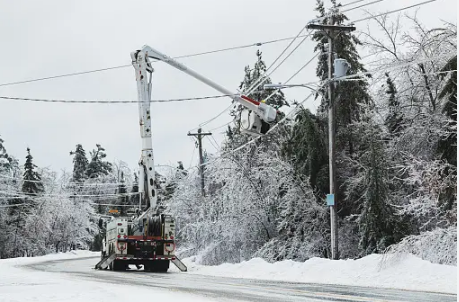Flood? Fire? Ice Storm? Would you know what to do?

Did you know that federal data in Canada shows that our country on average has about a dozen natural disasters a year? Experts say that the number of natural disasters will increase as climate change prompts more extreme weather- and it’s important for Canadians to be prepared. There are 4 types of extreme weather you may encounter in Canada:
Floods
Floods are the most frequent natural disaster in our country. Here’s how to protect your home:
- put well guards around your basement windows
- install a sump pump (prevents water from pooling in your basement) and a backflow valve (blocks sewage from entering your home and most cities provide some sort of funding to support this)
- if flooding is imminent, move your valuables and family keepsakes above ground level
- don’t attempt to turn off your home’s electricity when water is rising (could lead to fatal shock
- if you live in an area with frequent flooding, have your basement professionally waterproofed (there are exterior and interior ways to do this that are quite effective)
Tornadoes
Southwestern Ontario and the prairies are especially high-risk areas for twisters. Here’s how to protect yourself:
- listen to the local radio station and pay attention to emergency alerts on your mobile device
- if a tornado hits and your at home, go to the basement or a small ground-floor room like a bathroom
- in an apartment or office building, seek shelter in an inner hallway or room on a low floor
- if you’re driving, look for the nearest sturdy shelter, leave your car and hide in a low-laying area like a ditch
Ice Storm
Freezing rain can cause havoc on the power grid, knocking down trees and power lines leading to blackouts. Here’s how to protect yourself and home:
- ready up your emergency kit
Emergency kit should have the following:

- food and water for at least 5 days
- any prescription medications
- battery pack for your mobile devices
- flashlight
- battery-operated or crank radio
- candles and holders
- clothes and shoes
- toiletries
- first-aid kit, including bandages, alcohol, wipes, gloves, scissors, tweezers, swabs
- matches
- hand sanitizer
- important documents including copies of your health card and drivers licence
- waterproof bag
- pet supplies
Wildfires
Wildfires are expected to become more common as Canada’s climate changes. Here is how to be prepared:
- remove fallen branches, dried leaves and other potential fire hazards from around your home
- if a wildfire is approaching, close all doors and windows and cover your air vents
- turn on any sprinklers installed
- shut off the natural gas if you have it and move propane barbecues away from your home
- follow any evacuation orders
- visit the Canadian Interagency Forest Fire Centre website (ciffc.ca) for up-to-date map of fires
Be Proactive
You can find out more about potential hazards in your immediate area and how to prepare by visiting the government emergency preparedness website (getprepared.gc.ca). Remember to develop an emergency plan tailored to your home and the season (may be different in winter months) and share the plan with your family.
Don’t go overboard, we all need to live our lives, but it is important to think and plan for the unexpected so you and your family is ready should need be.